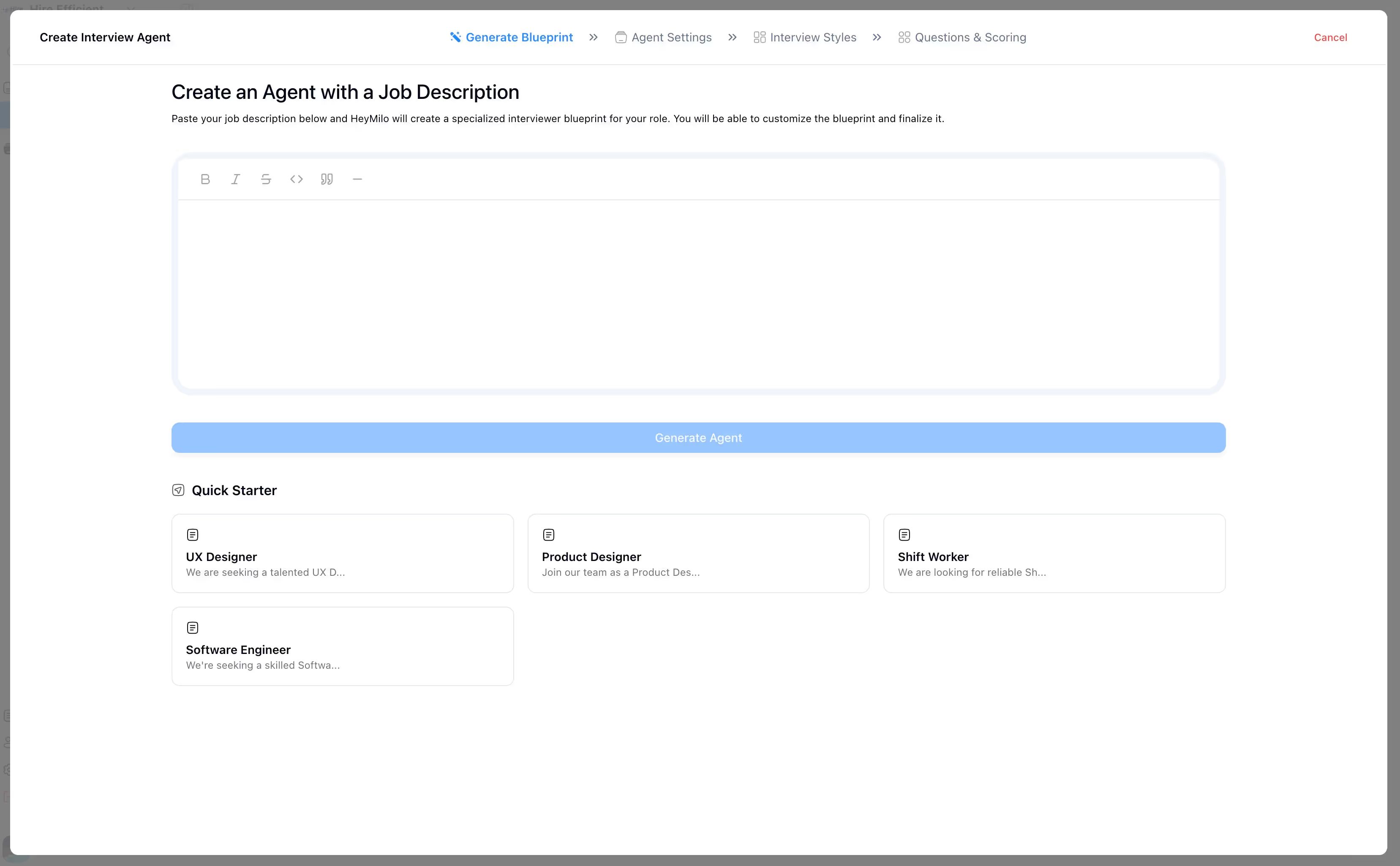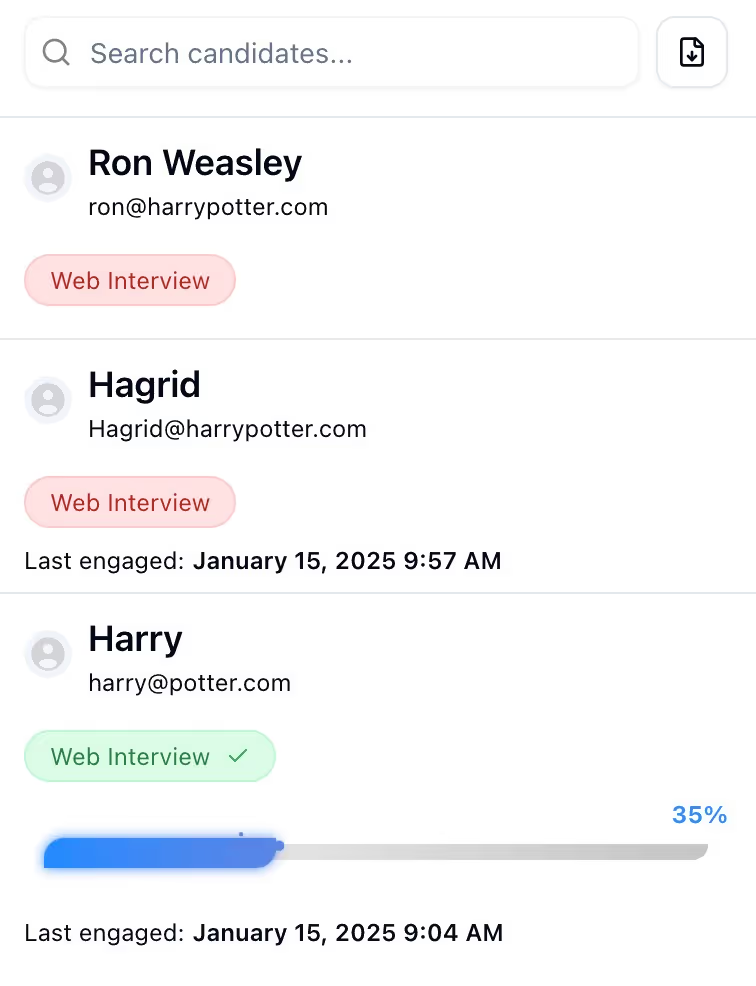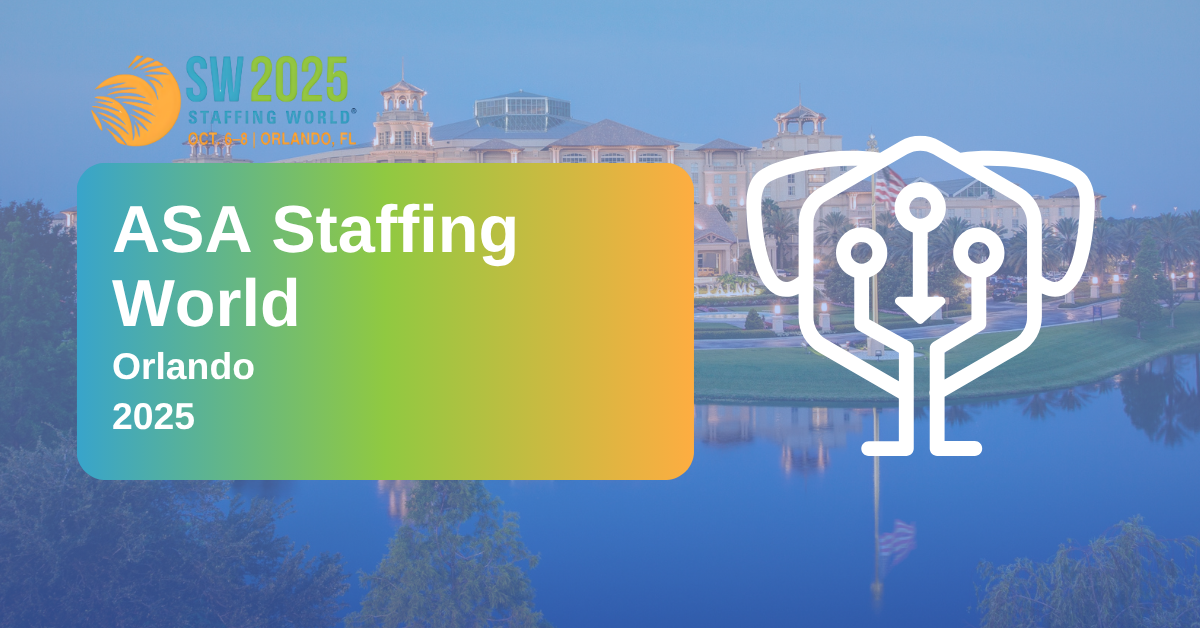Video Interview Software: One-Way vs Two-Way — What’s the Right Choice for Efficient Hiring?
Video interview software in the context of hiring, is a digital platform that lets organizations evaluate candidates through recorded or live video conversations asynchronously.

Video interview software in the context of hiring, is a digital platform that lets organizations evaluate candidates through recorded or live video conversations asynchronously.
What is Video Interview Software?
Today’s topic: video interview software.
Video interview software in the context of hiring, is a digital platform that lets organizations evaluate candidates through recorded or live video conversations asynchronously. It is commonly used for candidate screening because factors like distance or schedules can create an impasse in moving more job seekers along in the pipeline. 60% of recruiters turn to video interview software for its efficiency and flexibility. Additionally, many companies rely on this technology to continue and expand their conversations and screening efforts.
There are a couple ways to approach video interviews:
- One way
- and two way.
The first thing that comes to mind might be the platforms we know well like Zoom or Google Meet, and maybe Teams for everyday meetings or video calls. While these applications are fantastic for every day communication, video interview software is designed specifically for recruitment. It started gaining popularity in volume hiring assessments, and now it’s become an essential for overall hiring productivity.
One Way Video Interview Software: What It Is and Why It’s Used
Boom, there’s 1000 applicants on a job you posted earlier this week… The idea of scheduling 10-15 minute short initial interviews seem anything other than short or sweet. You’d love to meet and create opportunities for as many folks as you can, if not all, but that isn’t realistic when you have a million other things that require your immediate attention.
To move quickly, video interview software eliminates many of the scheduling conflicts that push us back during our precious hours of operation.
What is one way video interview software, and how does it work?
One way video interview software gets you started on a dashboard where you can configure your all your interviewing needs. Once you have inputted all the necessary requirements (e.g. question set up, evaluation criteria etc.), you are left with a standardized interview that you can send to all the people that have applied to your job. The interview is generally sent in the form of a link, which includes the structured set of interview questions you want candidates to answer and fields for their input to start.
As job seekers do their pre-recorded interview during and outside of business hours autonomously, key metrics will be tracked and displayed on your dashboard. Most of the solutions out there will show you things like the amount of interviews completed, transcriptions, and more alongside all the saved interview recordings.
It’s useful because companies have more bandwidth to conduct more interviews, and a lot faster than they were able to do previously. It’s extremely convenient for them to review pre-screened talent on their own time too. Some even have AI-powered features, meaning you get further insights through individual candidate scoring, matching, predictive analytics and so forth. Whether it be a general video screening tool, or one with AI candidate analytics, it’s up to you to decide what might be worth extracting from these platforms.
What does it look like for candidates?
When your screening link is received by a candidate-AI interview or one way-they can go in and respond to each question to the best of their ability, with some platforms that even allow for multiple attempts. Candidates can take the screening interview at their convenience, but within a deadline that a recruiter specifically arranges. Typically, the actual interview will have people record each of their answers one by one with their video on. They also commonly have timers on each question for you to track the duration, encourage on-the-spot answers like in person interviews, and to reinforce completion. Furthermore, they are generally accessible through phone or desktop.
.avif)
Two Way Video Interview Software: How It Facilitates Real-Time Interaction
Most of the asynchronous, two way interviewing platforms available online are AI-based, and we’ll be specifically touching on those as we proceed in this article. Now, to build off of the last concept, two way video interview software share a lot of similarities, but instead, it plays a more active role by incorporating live, interactive communication between the software (or AI) and the candidate. This format brings it a lot closer to a real conversation, like an interview, but makes it easier to scale and adapt.
The set up looks a lot like one way video interview solutions. However, because there is more independence and control, additional fields are often necessary to ensure the accuracy and intention of each interaction. All additional input from a recruiter’s end will personalize them even more, and if they are AI based (like an AI interviewer), guardrails or fine-tuning/training is necessary. Recruiters can configure an AI interview by defining things like the question set, determining the flow, and selecting any follow-up prompts. They may also fine-tune the AI’s tone, style of questioning, and any other specific areas of focus.
In contrast, these systems have might an AI interviewer that leads the questioning, interaction, and evaluation using natural language processing (NLP) and machine learning. It is a lot more efficient and intelligent compared to one way platforms—as a large portion of the review and evaluation that is needed to be done can be automated as well.
This option is particularly useful for a quicker, but more thorough understanding of a candidate's communication strengths, cultural compatibility, and problem-solving capabilities.
What does it look like for candidates?
These interviews are also commonly sent via a link. Candidates still also answer on their own time via phone or desktop, for recruiters to review later on. When job seekers do an interview on these platforms, they answer as they would at an in-person interview. Rather than just a static screen to pre-record answers, the flow is more natural, where candidates are asked follow ups as the AI interview adapts live, and they can even ask it questions about the job.
Watch this youtube video to see an two-way AI interview live.
Benefits of Video Interview Software
Getting Through More Candidates
The math of traditional screening calls doesn’t add up, at least if you want to scale.
With a mass amount of applicants, you either start to burn out from working long, unpredictable hours, or dismiss good candidates without talking to them. Realistically, you are actually left with a combination of both.
With video interviews, you can review 3-4 candidate responses in the time it would take to complete one phone screen.
.gif)
Making Stronger Decisions
Phone screens force you to take notes, listen without missing details, and think about next questions simultaneously. We can’t rewind a phone call (software aside).
With the option to pause and rewatch recorded interviews, you can give candidates your full attention, take breaks to write notes, and revisit important responses.
Keeping The Interest of Good Candidates
Great candidates often can’t do 2PM calls. They are working at their current job, or in a different time zone.
With either of the options for candidate screening software, applicants can submit their responses when it’s convenient. 2 PM, 2 AM, whenever—because a completed interview is a completed interview.
To add to that, if they are actually interested in the job, they’ll likely have it done ahead of the due date.
Fair Evaluation
Phone screens vary wildly, and can be unpredictable. Your energy levels naturally change throughout the day. Questions get asked or explained differently. Some candidates get more follow-ups than others.
However, both types of virtual interview platforms give everyone identical questions, explanations, and response time. You can really compare answers directly and objectively, not just how well you connected with someone on a call.
Get Straight to The Point
Writing summaries after phone screens can be a draining and often unnecessary step in the hiring process.
You can easily send clients a recorded video interview and even timestamp it where it most matters. Share something like, 'Here’s how they responded to the technological skill question,' and let them make their own judgment. Direct evidence beats second hand notes every time.
Maximizing Your Hiring Hours
The time you save by not having to schedule or reschedule interviews goes into talking with qualified candidates, preparing for each conversation, making more placements, expanding your client base, and focusing on other critical parts of hiring.
Must Have Features of Effective Video Interview Software for Recruitment
1. Dependable Recording Quality: The software must stay reliable, even if the internet speed changes, and have a fallback option to prevent losing candidate answers.
2. Easy to Navigate Dashboard: You need a dashboard that lets you share with hiring managers, rate candidates, and move quickly.
3. Flexible Customization and Interview Set Up: Some tools provide pre-built templates, but you can also create your own set of questions to match the role perfectly, allowing for a mix of efficiency and personalization.

4. Clear and Accessible: Mobile-friendly interface. Clear instructions. Minimal tech requirements. Practice attempts or materials to help before recording. It’s basic, but super crucial for completion rates.
Popular One-Way Video Interview Software
Below are some one-way video interview tools, with a short overview of their strengths and key features.
HireVue
Top strength: AI scoring for high-volume hiring
Top feature: Predictive assessments based on millions of interviews
Who it’s best for: Enterprise companies screening thousands every month
Watch out for: It takes time to figure out, and the setup might need extra help

SparkHire
Top strength: Quick implementation, and straightforward pricing
Top feature: One-way video interviews with customizable branding options
Who it’s best for: Small to mid-sized companies new to video screening
Watch out for: Limited advanced features, especially in comparison to more robust platforms

VidCruiter
Top strength: Detailed rating guides and scorecards
Top feature: Side-by-side candidate comparison
Who it’s best for: Companies with structured hiring processes
Watch out for: Price increases as additional features and customization options are added

Some of The Best Two-Way Video Interview Software
Here are some candidate screening tool options with two-way video interviewing, broken down for you as well.
HeyMilo AI
Top strength: Natural conversation flow with AI
Top feature: Adaptive follow-up questions that get more information
Who it’s best for: Companies and agencies with high-volume hiring needs
Watch out for: reliance on technology could create challenges for candidates with limited access to reliable internet or devices
.avif)
Interviewer.ai
Top strength: Global language support
Top feature: Automated skill matching
Who it’s best for: International hiring teams
Who it’s best for: Limited customization options

Alex (formerly Apriora)
Top strength: Deep learning for skill assessment
Top feature: Role-specific AI interviewers
Who it’s best for: Companies expanding their technical hiring processes
Who it’s best for: Higher investment costs for advanced features

Selection Criteria for Choosing the Right Video Interview Software
User Interface
Look for:
- Clean dashboard showing what needs attention
- Ability to review candidates with just a few clicks
- Bulk actions for common tasks
- Easy filters to sort candidates fast

Syncs Perfectly With Your Current HR Stack
Two questions matter:
- Does it work with your ATS?
- Can it send invites automatically?
Security and Data Privacy Features
Look for:
- Data privacy regulations (e.g. like requirements outlined in the EU AI Act)
- Compliance standards (e.g., SOC 2, GDPR)
- Along with data retention practices that are legally sound
Pros and Cons of Virtual Interview Platforms
Pros
- Screen three to four times more candidates in the same amount of time
- Compare answers side by side
- Let candidates interview when they are at their best
- A standardized process helps reduce bias
- Share exact responses with hiring managers through shareable reports or recordings
Cons
- Some candidates prefer live interaction
- Requires decent internet connection
- Problems with technology can annoy candidates
- Limited opportunity for impromptu talks
- The setup process may take a bit of time to complete and adjust to
Explore the pros and cons of using virtual interview platforms in your hiring process.
Why HeyMilo Stands Out: The Best Choice for Video Interviewing in Recruitment
That’s a wrap, we hope you found this article helpful! We’ve explained what video interview software does and how to select the best one. Ultimately, a recruiting or staffing agency’s main focus should be on creating a process that is convenient, adaptable and leaves candidates and recruiters with a positive experience.
HeyMilo is made to be quick to learn and easy to manage. Whether you’re reviewing responses or sharing interviews with clients, everything is organized so you can focus on truly finding the ideal people for your open roles.
The platform's AI recruiter makes it easier to review, rate, and interact with candidates. It’s intuitive to use, and our team is always here to support you along the way. Contact us at hello@heymilo.ai or reach out through our socials whenever you're ready to learn more or need assistance.
.avif)
Yes, when it comes to interviews, we utilize an active proctoring layer, an AI-classifier, and more to detect cheating. We provide a trust score that indicates the likelihood of cheating.
Candidates are appreciating the ability to go beyond their resume and interview in a more interactive/adaptive manner compared to one way video interview software. We also have an average candidate satisfaction score of 4.6/5 - which highlights HeyMilo's conversational AI.
Questions can be configured with an objective evaluation criteria - so candidates are evaluated the way your recruiting team currently evaluates candidates.We additionally run 3rd party bias audit checks so with HeyMilo, you're leveraging ethical AI.





.webp)
.png)


